-
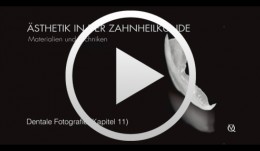

Esthetic and Restorative Dentistry - Dental Photography
Terry, Douglas A. -
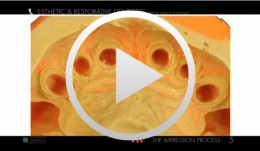

Esthetic and Restorative Dentistry - The Impression Process
Terry, Douglas A. -
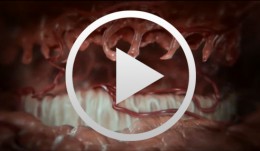

Cell-to-Cell Communication: Periodontal Regeneration
Stadlinger, Bernd / Terheyden, HendrikUnlike bone, which undergoes remodeling by resorption followed by bone apposition, teeth are not subject to physiological remodeling. They are remarkably resistant to physiological remodeling processes. The reason for this is found in the periodontium and cementum. The mechanisms that take effect in this area and the effectiveness of the periodontal system - consisting of gingiva, alveolar bone, periodontium and cementum - after injuries will be visualized in the new scientific 3D film, "Periodontal Regeneration".The visualization of these complex processes is of great interest for academic teaching as well as for the clinician and general practitioner as the cellular interactions are presented in the context of four phases. For the first time scanning electron microscopic images of real cells will be visualized allowing the comparison of their characteristics with computer animated simulations. DVD 1: Expert Version approx. 14 minutes DVD 2: Public Version approx. 13 minutes Outline: - Cementum formation - Orthodontic tooth movement - Trauma and periodontitis - Periodontal regeneration -
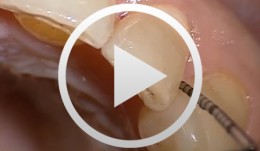

Minimally Invasive Treatment of Periodontitis (Surgical Treatment of Recurrences)
Beck, FrankContents: When treating recurrent periodontitis surgically, the challenge is to sacrifice as little soft tissue as possible in esthetically critical areas. This surgical case demonstrates the technique used in patients with narrow approximal spaces. -


Bone Spreading, Bone Condensing
Streckbein, RolandContent: Surgical flap creation and elevation; Use of drill template for exact determination of implant position; Implant site creation; Site preparation / tapping; Bone compaction; Insertion of the implants; Impression-taking; Wound closure; Later implant insertion; Dental lab work; Creating the model with laboratory implants; Shaping the bar frame; Adapting the laser welded frame to the model; Manufacturing the tooth replacement, Fitting the bar into the tooth replacement; Finishing work. -
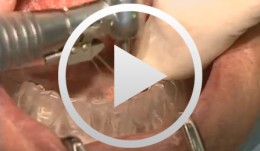

Implants for the Anterior Maxillary Region
Horrichs, Leon G.Contents: - Implant planning and positioning - Preparation - Drilling and thread-cutting - Implant insertion - Wound closure Synopsis: The implant position is determined using a drill guide/x-ray template (regions 34-32-42-44). A Peeso drill is inserted in the drill guide and used to mark the position in the mucoperiosteum. An incision is made, and the mucoperiosteum is displaced. The implant insertion sites are prepared by using a 2 mm twist drill, 2/3 mm pilot drill, 3 mm and 3/5 mm twist drills. This is followed by counter-drilling and thread-cutting. The implants were loaded at 40-50 N. The wound is then closed using GORE-TEX® suture material. -
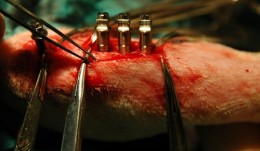

Osseointegration of Implants
The complex process of osseointegration involves formation of an interface between a dental implant and the host’s bone, without intervening soft tissue. Formation depends on qualities of the implant surface, such as its roughness and porosity, as well as characteristics of the host. Titanium coatings offer a good osseointegration surface. After preliminary tests to characterize bone-contacting materials and toxicity reactions, animal models are used to assess different aspects of bone remodeling. This chapter describes several studies for determining the biocompatibility of new implant materials, and their mechanical stability and safety. Models include the tibia of rats and rabbits, and the mandible of the dog, in which different shapes and sizes of implants and fixation techniques can be compared, and the best parameters for quantifying tissue reactions can be established. Mechanical strength testing using measures of torque and shear, for example, help determine how much bone should be in contact with the implant in order to promote osseointegration. The quality of new bone can then be assessed in terms of area, volume and extent of integration. The use of standardized methodology for sample preparation is also emphasized, with detailed description of the Donath technique, which offers many benefits but is expensive, time consuming and requires for specially trained technicians. -


Communication with the patient
PhD Nikos MattheosIn this module on communication with the patient, Professor Mattheos presents key parameters involved in achieving patient satisfaction and treatment success. After completing this module you will know how successful treatment is defined and understand the strategies and aims of effective communication with patients. -
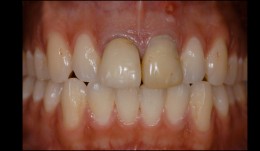

Replacement of two incisors in a young male
Prof. Ronald E. JungMale patient *1978, by Jung (2006-2008). After a traumatic injury to his two central incisors, this patient came to our clinic for a long-lasting replacement with high esthetic standards. -
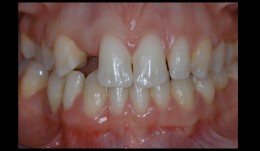

Rehabilitation of a patient with hypodontia
Prof. Ronald E. JungFemale patient *1974, by Jung and Damur (2004). This patient with hypodontia came to our clinic for a treatment of her multiple gaps and limited esthetics. -
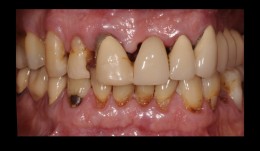

Replacement of dental works to improve masticatory performance
Dr. Dominik BüchiMale patient *1938, by Büchi and Jung (2010-2012). This patient came to our office because he was bothered by the low esthetics and masticatory performance of his dental works. -


Reinstatement of complete oral health in patient with periodontitis
Dr. Dominik BüchiFemale patient *1948, by Büchi and Siegenthaler (2009). This patient suffering from periodontitis wants to reach a state of complete oral health and ideal masticatory performance.










